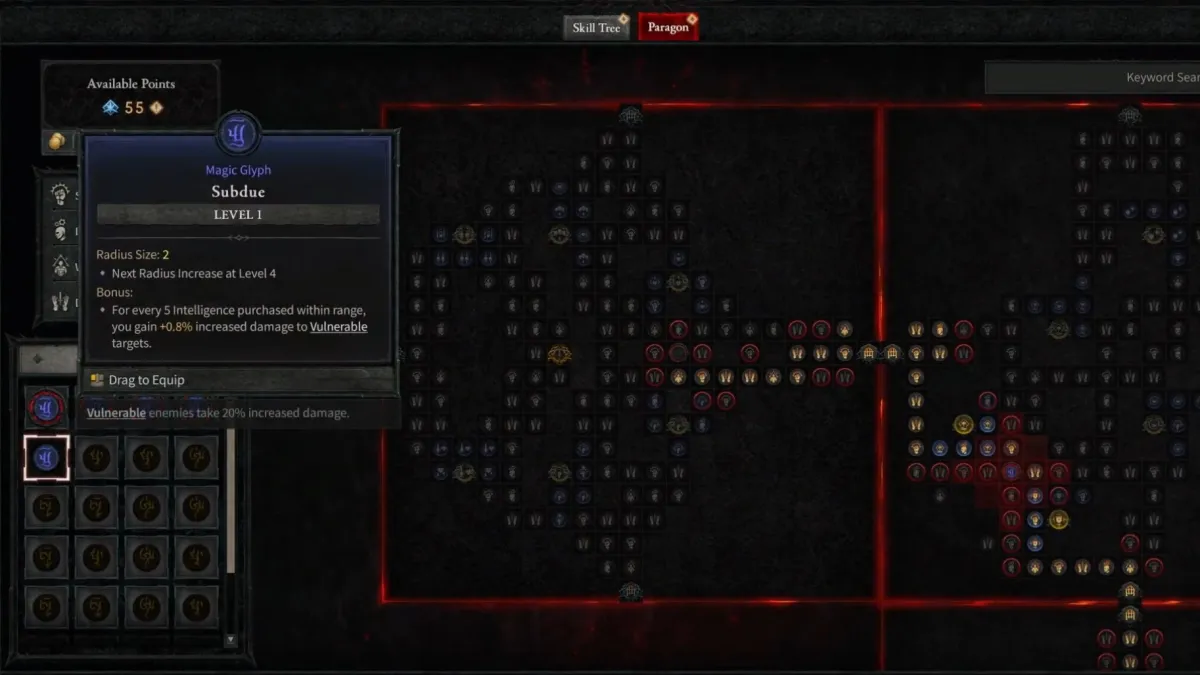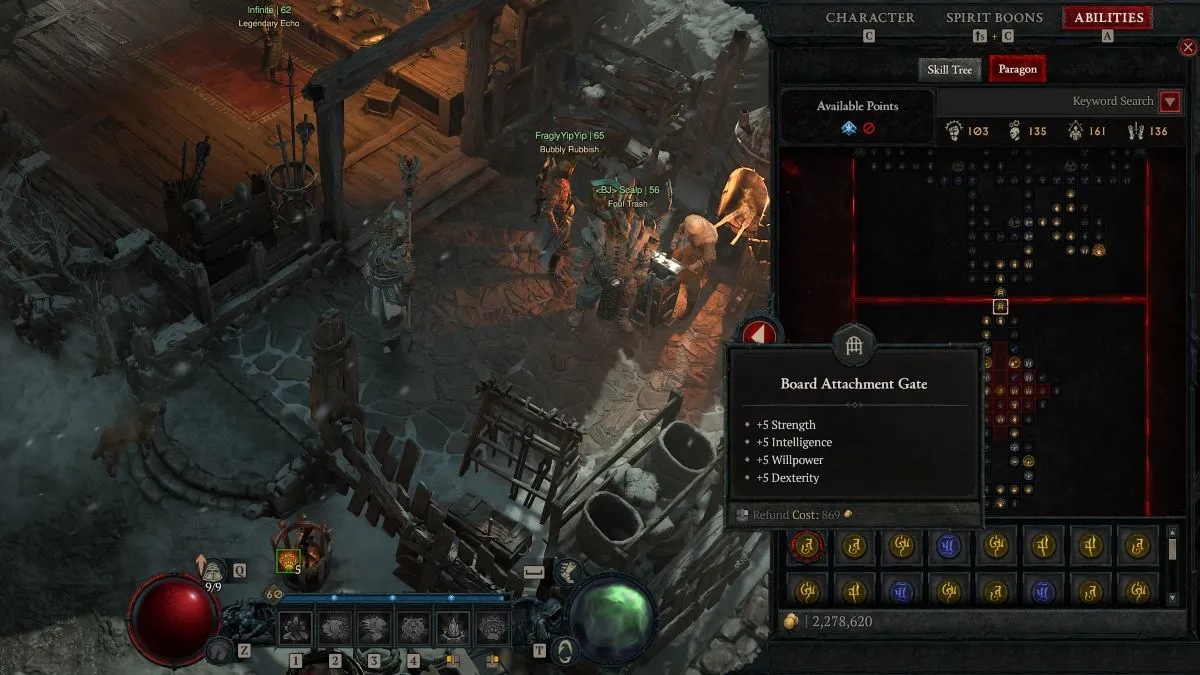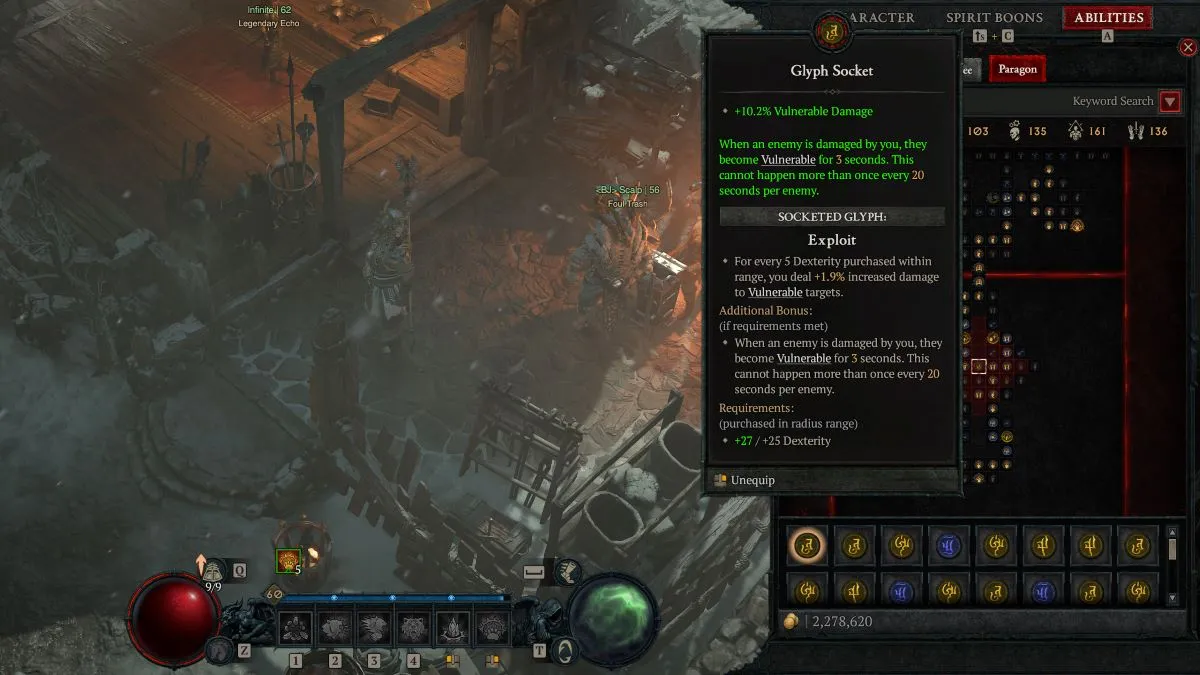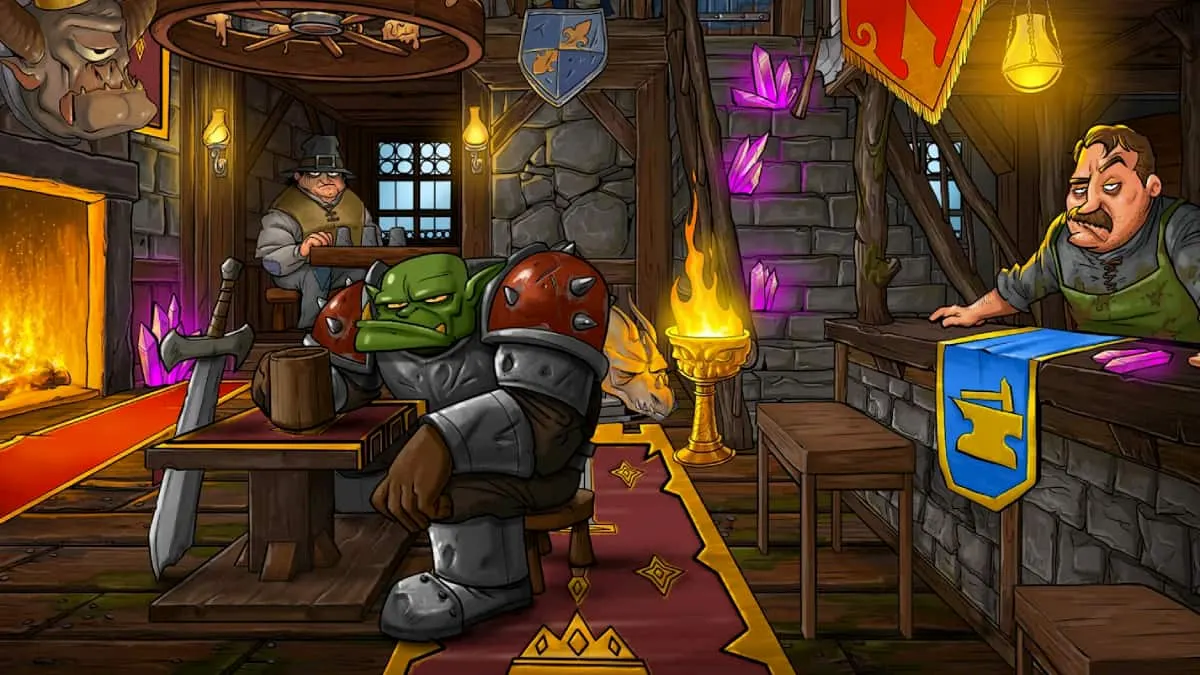The Paragon System in Diablo 4 may sound familiar to series veterans, but it doesn’t work in the same way it did in Diablo 3. In Diablo 3, the Paragon system kicked in once you hit the level cap and acted as a way to level up past the cap with separate Paragon levels. These levels increased passive stats from a small pool of options for all characters on the account. It was a simple but effective system and now it’s been through quite the change for Diablo 4.
Here’s How The Paragon System Works Now in Diablo 4
By default, every class in Diablo 4 will gain access to the Paragon system once they hit level 50. There is no longer a shared Paragon level that makes your characters overpowered from the moment you make a new level 1 character with 500 Paragon levels. In fact, Paragon doesn’t really revolve around levels any more at all; it’s now more of a skill point system that utilizes a skill tree. This creates a ton more customization that can happen for each individual character as there are a wide variety of passive stats that can be allocated.
Characters have different Paragon boards that they can string together as they level up and earn enough Paragon points to allocate throughout the starting Paragon board to reach the connector node. Once you’ve chosen the next board to connect, you’ll be able to expand your Paragon point expenditure upwards onto the new board. With the current level cap being 100 and several Paragon points being gained per level, you’ll be able to build out quite an impressive Paragon board by the time you reach max level.
There is an absolute ton of power that comes from the Paragon System, and with the difficulty scaling in Diablo 4, you’ll need all the power you can get as you work through higher tier content.
Another interesting feature of the Paragon boards is the special nodes where you can slot in Glyphs. These are special drops that you gain and level up by completing Nightmare Dungeons. For a more detailed explanation, check out our guide to Glyphs. Essentially, Glyph Sockets offer powerful passive abilities that you can level up and fill in for rather big power spikes. It adds another layer of customization and optimization that you can do for each character in Diablo 4.
That covers how the Paragon System works in Diablo 4. It’s quite the change from Diablo 3, but it is more engaging and rewarding having a proper skill tree to allocate to and optimize around rather than a few choices on a tab like we had in Diablo 3! And if you’re looking for more guides to Blizzard’s latest dungeon-crawler, take a look through our archives.
















Published: Jun 17, 2023 7:38 AM UTC